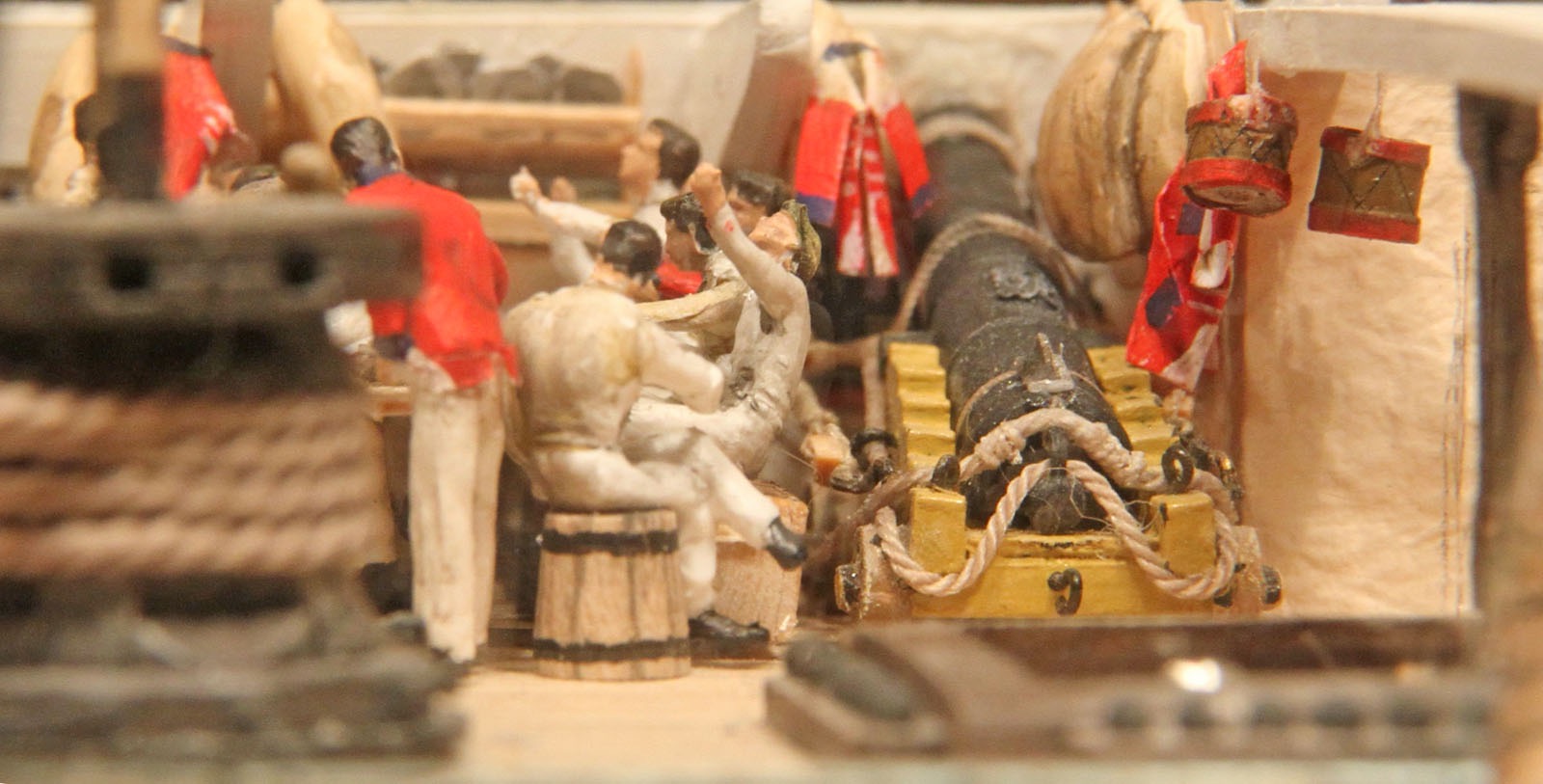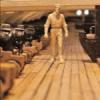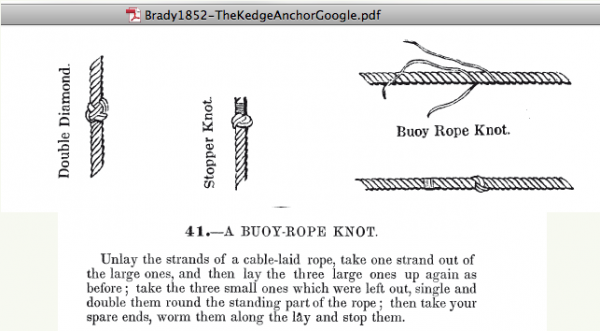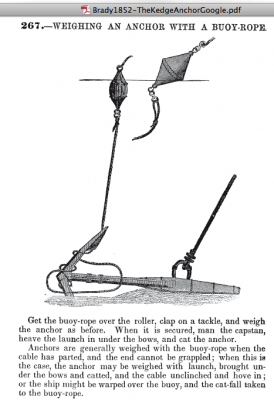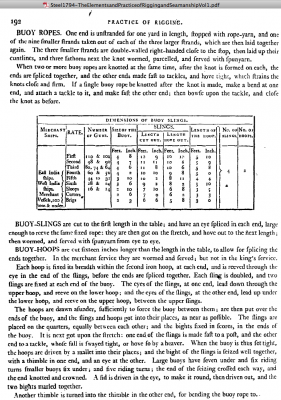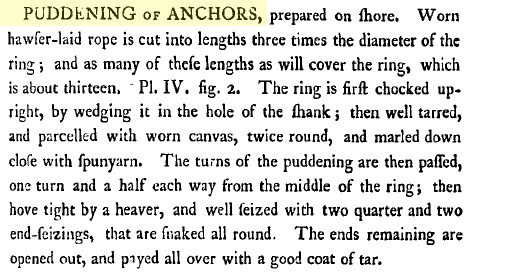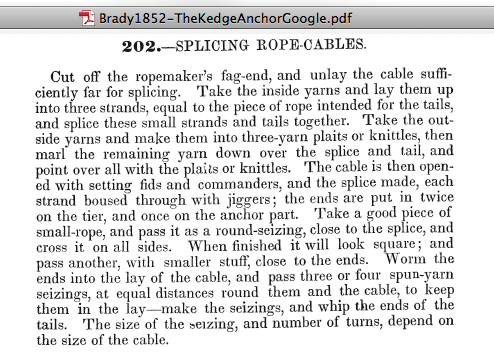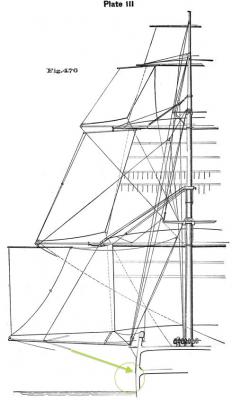-
Posts
2,405 -
Joined
-
Last visited
Content Type
Profiles
Forums
Gallery
Events
Everything posted by dafi
-
Thank you Ian and Popeye, me too, looking forward for the whole cake ;-) Cheese-chokolate-layers, yummy :-) XXXDAn
-
Alle Jahre wieder (Every year again), also known as "every decade the dafi manages to finish something" ... ... my small slice of in between meal is served ... ... and lives ... ... while you can hear the chant "By the deep 17" ... ... the lieutenant and his midi are listening carefully ... ... and whisper it further with the speaking trumpet. In the same time the crew ... ... with her own calm ... ... and sangfroid ... ... brings up a new rope. And as the story was so great, here the whole picture :-) Now only missing a new passe-partout and some good pictures, cheers, enjoy and have fun, the dafi
-
Here is the picture of the made mast of the Great Britain from Greenwich, nicely seen at least 8 parts. and the Victory with different structure Just one small question: Did the Vasa have made masts? I always believed it to be pole masts. Even the much bigger Victory had pole masts when build in 1765. Cheers, Daniel
-
Love what you are doing and to be honest - you are beyond just using some etch parts, you developed your own style :-) Nicely to be seen on the parts that I did not touch myself! Just one thing - do think twice about using the thinner plastic spars, especially on the bows. Here is a comparison in between the Heller spar and a wooden one of the same diameter. Cheers, Daniel
-
Ian, Foxy, Michael, Hypo, Frank, Mark and Popeye, thank you for your kind words, you are very indulgent :-) It was a fair fight - I got more sausages than Robert - so he HAD to take revenge on the buoy ... ... but to be correct, there is still room for improvement until I do the real thing on my Vic ... ... the two round loops top and bottom should be a tad more towards the middle, the buoy could possibly slide out sideways through the gap in the middle ... ... the knot to fix the buoy rope on the buoy is still to be defined properly. I had to cheat by useing a bowline knot as the bottom eye of the buoy was to small to do two rounds for the intended anchor bend ... ... XXXDAn PS: But hihihihihihihihihi... ... Robert slipped his tongue ... ... he admitted that his model of the french 74 in the Deutsche Museum München has untarred buoy ropes ... ... what a beginner he is ... ...hihihihihihihihi... ;-)- http://www.deutsches-museum.de/en/collections/transport/maritime-exhibition/
-
Thank you all for the kind words :-) By now, this build was incorporated into my big Victory build as it developed into a test for several features over there. Please refer to this link to see the whole documentation full of drama, blood and gore :-) #634 Here some teasers: Cheers, DAniel
-
... ooooh ... ...it still has room for improvement until I do the real thing on my Vic ... ... the two round loops top and bottom should be a tad more towards the middle, the buoy could possibly slide out sideways through the gap in the middle ... ... the knot to fix the buoy rope on the buoy is still to be defined properly. I had to cheat by useing a bowline knot as the bottom eye of the buoy was to small to do two rounds for the intended anchor bend ... ... XXXDAn
-
Hello Martin, parts are on the way since this morning :-) And very enjoyable build, looking forward to keep up with it! Cheers and thanks, Daniel
- 467 replies
-
- fly
- victory models
-
(and 1 more)
Tagged with:
-
The best results I usually got if was as near to the original as posible. So I went to try out the real serving. But as the real thin ropes proved to be to be to thin for the serving mashine I used copper wire. Took one of my two colored ropes ... ... enjoyed the fancy effects ;-) So another try with two single untwisted threads - black and brown - to get the wanted color effect, the wire was first blackened with Edding ... ... and bingo - here we go :-) Another comparison in between the fake white glue version and the real served one. Used V4 and the fancy colored rope to try the fixing of the slings and it proves to work far better than the rubber version seen of the bottom :-) Made my now famous bacteriophage ... ... looks already creepy ... ... but this full-sucked tick, that will be V5 ;-) Placed in its place ... And what will remain? Only the memory remains ... of V1 up to V4 ... XXXDAn
-
So after a couple of weeks I found time for the shipyard ... *blowingawaythedust* ... what did I find ??? And everything started in such a nice and easy mood ... *gettingwetmouthbyrememberingallthedeliciousthings* ... but dark clouds started to gather on the horizon! A certain Monsieur R. V. from A.*** already started to moan about the buoy before the meeting *lookingforthedevilsmily* (For legal reasons we blended out his face with a red square.) Buoy ropes should be tarred and not à la natüre and the buoy slings be smarted ... ... also the lenght of the buoy rope was questioned ... ... and-and-and ... ... Back at home same procedure as usual ... ... first the buoy rope tarred - not to dark - and about 20 fathoms long and thickness a third of the anchor cable - a heavy tool needed to break free the bower from the ground. http://modelshipworld.com/index.php/topic/7685-anchor-buoys-looking-for-details-of-ones-used-in-1700s/page-2#entry230141 Then tarred the slings with white glue and black paint to make disappear the gaps to look like the right one ... ... but at least the fingers looked spectacular ... ... and then my misinterpretation - the buoy itself à la natüre and not tarred ... ... and V2 goes down the drains :-) Then the discussion goes on about the thickness of the slings: Usually the slings and lanyards have half or a third of the superior rope´s diameter. So new slings done, 1/3 of the anchor cable and 1/3 of the buoy rope ... ... looks ridiculous :-( Got it, the slings are not to transmit force its just to hold the buoy. Ok, discard V3. By then Bernd showed a nice version in our german forum http://www.segelschiffsmodellbau.com/t717f368-HMS-Pandora-scratch-11.html#msg44816 ... that brought me back to the testing grounds :-) V4 was another try with slings of white glue, thick black paint and brown casein paint ... ... but realised half way that they represnt much more a rubber duck than a buoy slings ... ... that is why I stopped and ... ... to be continued :-)
-
Nice project, I like the approach :-) If you wish to be historical correct, do not forget that the masts and rigging was usually purely english, best seen on the tops , mastheads and caps etc. and so on. Means masts could become scratch. Cheers, Daniel
- 23 replies
-
- le superbe
- heller
-
(and 1 more)
Tagged with:
-
Thank you Ian :-) There was a simple reason - to many flaws still in my one ... ... we had some major discussions in our german forum about the details ... ... and this interesting discussion did not finished yet ... ... but Bernd was already having a far better result! About my humble effords ... - First the bouy slings should be served. I fixed that. - then it looks like the buoy rope should be tarred. But what color does that mean? That lead to another lengthy but fruitful discussion about the colors of tarred rope over there. So I was appreciating very much the parallel discussion here: http://modelshipworld.com/index.php/topic/7561-ratlinestarred-or-not/ ... and I opted for a dark brown ... - then I misinterpreted a text and left the cork natural: Version 3 to be skipped ... - Next was about the thickness of the buoy slings. Usually lanyards and tackles are half or a third of the following rope: With the buoy rope being a third of the anchor cable (Harland Seamanship) and then another third ... ouch much too thick ... understood, those slings were simply to hold the buoy and were not for big pulling. - In the moment I am doing Version 5 with tarred cork, buoy slings served ropes in a diameter corresponding to the contemporary models in a dark brown and a buoy rope tarred in a medium brown. quote from Luce, thanks to Chapman: Source: http://hnsa.org/doc/luce/index.htm Buoys and Buoy-Ropes. Buoys attached by their buoy-ropes to the crown, point out at all times the situation of the anchor. The can buoy is in the form of a cone, it floats base uppermost, and the rope is attached to the apex. The nun buoy is largest at the centre, tapering at the ends. The latter is in general use. Fig. 434, Plate 92. The size of buoy-ropes is one-third of the cable. The length varies, for it is shortened or lengthened according to the depth of the water in which you will drop the anchor. It is bent to the crown of the anchor, by taking a half-hitch around one arm, and putting the running eye in its end over the other arm; or a clove-hitch is formed over the crown, and the end stopped along the shank, or to its own part. Or, Attach a large thimble to the crown of the anchor, by a stout strap of the size of the buoy-rope (one-third the cable). Through this thimble is rove the buoy-rope, both parts leading up to the buoy. The advantage of this is, that the buoy-rope may be smaller, and when necessary, a stout rope of the required size, may be, by it, rove through this thimble in the crown of the anchor, thereby affording a greater purchase than that of a single rope, for weighing. The only objection to this plan is, that the two parts of the small buoy-rope will become hawser-laid, and will not unreeve. But this may be, in a great measure, remedied by having one part plain-laid and the other back-handed rope. 253 Sometimes a buoy will not watch, from its having filled with water, or from the buoy-rope being too short, particularly in a tide-way. By this is meant, that it does not float on the surface of the water. In the former case it will be necessary to bleed it, that is, to let the water out. In the latter, to lengthen the buoy-rope. Buoys are generally kept, one in each of the fore channels for common use. Spare ones are kept in the hold. It was a very good rule, that an anchor should never be let go without a buoy attached. But since the screw propeller has been introduced, they have been less used, through fear of fouling the screw, though the end of a chain is always buoyed in slipping. Harland Seamanship page 231 to 279 The biggest collection of informations - Buoy a quarter of the anchor shaft´s length - Buoy rope a third diameter of the anchor cable - fits to the dimensions Steels gives for a first rate Marquardt Schoner in Nord und Süd page 177ff + Bemastung und Takelung ... page 380ff - Buoy made of cork of slices thickness 1 inch - served slings - Buoy rope 18 to 25 fathoms (about. 30 to 45 meter) Nares Seamanship page 120ff - plenty details - first throw the buoy, then let go the anchor Brady Ketch Anchor page 150ff - to break loose the anchor with a small boat: stretch the rope with all men on this side, belay the rope tight and then everybody jumping to the other side of the boat :-) - page 197: Adapt the buoy to the depth of the water with a bouy rope knot. Lever Sheet Anchor page 68ff - buoy slings served - Length of the buoy rope 17 to 18 fathoms Lavery Nelson´s Ships page 170 - buoy rope fixed on the arms side and not on the ring to facilitate breaking free the anchor McGowan/McKay HMS Victory page 194ff - fishing the anchor McKay AOTS HMS Victory - nodding ;-) Lavery AOTS Bellona page 66ff - very weak way of stowing - stream anchor fixed arm on arm as seen with Brady http://collections.rmg.co.uk/collections/objects/200881.html (no canvas around the cork) Marquardt AOTS Costitution page 82 - some of the most stable lashings shown in literature Lee Masting and Rigging page 129ff - length of the buoy rope depending on the expected depth of the water - the rope for the slings is about 9 times the length of the buoy - nice pictures of anchors from contemporary models Schrage Rundhölzer - nothing Steel sayz: http://hnsa.org/doc/steel/part2.htm#pg61 page 61 Buoy-ropes are commonly laid shorter than cables. page 66 For Stays, Tacks, Sheets, and Buoy-Ropes, which are Cable-laid, allow the same Length as is shewn for Yarn in the Tables for Cables, which shew how many Fathoms and Feet of Yarn will make a Fathom of Cable, from 1 to 120 Fathoms XXXDAn And some more Steel, Brady, Nares und Biddlecombe :-)
-
I think that is a 74 by the rigging from this source: http://www.shipmodels.com.ua/eng/models/elite/74_gun_ship/ Yes the buoy were layers of cork, about 1 inch thick :-) Here is a different version out of NMM http://collections.rmg.co.uk/collections/objects/266589.html Did those buoys have a central axis from wood or rope? XXXDAn
-
Here Sir dafi again :-) Lee mentions plenty details pages 115-119 but does not mention the martingales ... (... or I did not get it as it is in english ...) Nares shows the setting from page 106 on and plates 159 and 160. Lever shows it on pages 81 and 82. The martingale has a block and is led up to the fore castle - but this is a version 50 years after my time slot :-) XXXDAn
-
All the lifts and guys are mentioned somewhere but the martingale ... McKay shows the following: Fore boom on an eye bolt in the middle in between cathead and fore channel and a bit higher than the channel. All lifts and guys are in fixed in the middle of the boom with loops held by a clamp. Underneath the hook on the hull there was a down holder to prevent unhooking (McGowan page 190) The topping lift: In AOTS it goes to a block underneath the fighting top and then possibly to the fore bits (front or aft the mast?). Circumference is 3,5" In McGowan the block is on a long pendant from the lower mast cap and possibly going to the timber heads of the fore castle. In AOTS the after guy comes from the aft fore channel deadeye and goes to the middle of the boom and the front guy goes from there to a block on the outer edge of the spritsail yard back to the timberhead beakhead bulkhead (?). Circumference 3" in McGowan not really to be seen. The martingale is the downward counter part of the topping lift. In AOTS it goes down to the level of the upper edge of the whales, means lower edge of the gunports. Also 3,5" suggested? In McGowan page 190 it shows an eyebolt and a hook. Height is difficult to recognize. Petterson shows the main boom martingale with a block on the height of the whales, free end pointing direction of the channels XXXDAn PS: Ian, Sir will do it ;-)
-
That too is my understanding. As far as my knowlegde is, that with the Victory, the main stunsail booms were hinged to the main channels and the fore ones were stowed in the waist with the other spars. Possibly for not obstructing anchor work. The USS Constellation possibly had another arrangement. xxxCAPTAINdafi Thanks Ian!!!
-
I vaguely remember some scenes in MaC where the booms where used also for the handling of the boats, when "parked" beside the ship. Was this a common use? Like the main one on Victory that is in a almost ready to use position? The other question concerns the downward lanyard. Where and how was this one fastened? Hooked into a bolt beside a gunport? Some sheeve going into the hull? XXXDAn
-
If Victory kits are mentioned, I still miss the classic Heller one :-) By the form of the hull still the best one imho, best details for the scale, well to be done oob and if one wants to bash, there is plenty of opportunities. http://modelshipworld.com/index.php/topic/76-hms-victory-by-dafi-to-victory-and-beyond/page-35 Cheers, DAniel PS: OK, forget the instructions ...
-
I think AOTS and McGowan/McKay give a nice overview about all the sails. I did not check if the details are fitting 100% but it looks like a great base to start with. I would not say that it is impossible to do the sails at this scale, as Blue Ensign nicely proved with his Praetorian. http://modelshipworld.com/index.php/topic/152-le-superbe-by-blue-ensign-heller-plastic-built-as-le-praetorian-after-boudriot/ If more details needed, contact me PM. Cheers, Daniel
About us
Modelshipworld - Advancing Ship Modeling through Research
SSL Secured
Your security is important for us so this Website is SSL-Secured
NRG Mailing Address
Nautical Research Guild
237 South Lincoln Street
Westmont IL, 60559-1917
Model Ship World ® and the MSW logo are Registered Trademarks, and belong to the Nautical Research Guild (United States Patent and Trademark Office: No. 6,929,264 & No. 6,929,274, registered Dec. 20, 2022)
Helpful Links
About the NRG
If you enjoy building ship models that are historically accurate as well as beautiful, then The Nautical Research Guild (NRG) is just right for you.
The Guild is a non-profit educational organization whose mission is to “Advance Ship Modeling Through Research”. We provide support to our members in their efforts to raise the quality of their model ships.
The Nautical Research Guild has published our world-renowned quarterly magazine, The Nautical Research Journal, since 1955. The pages of the Journal are full of articles by accomplished ship modelers who show you how they create those exquisite details on their models, and by maritime historians who show you the correct details to build. The Journal is available in both print and digital editions. Go to the NRG web site (www.thenrg.org) to download a complimentary digital copy of the Journal. The NRG also publishes plan sets, books and compilations of back issues of the Journal and the former Ships in Scale and Model Ship Builder magazines.

